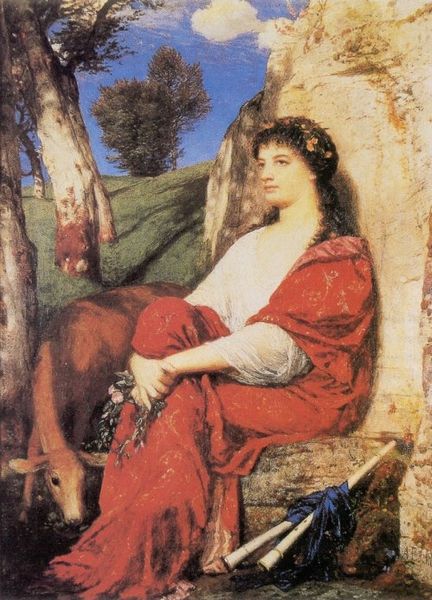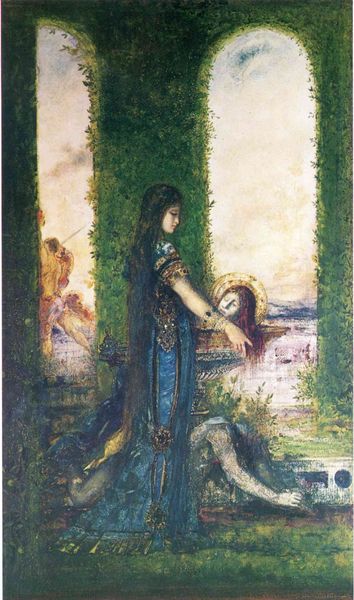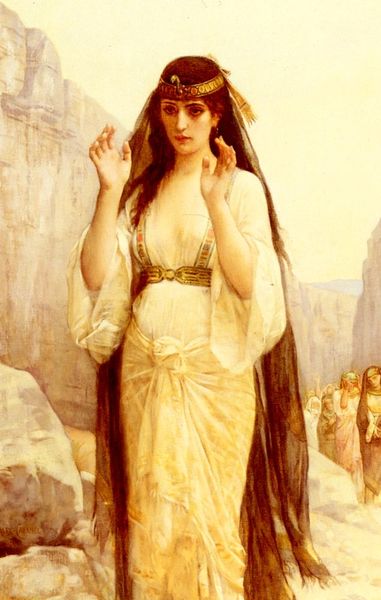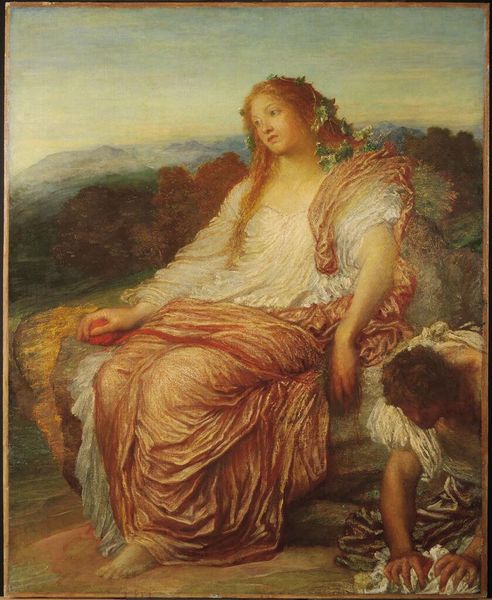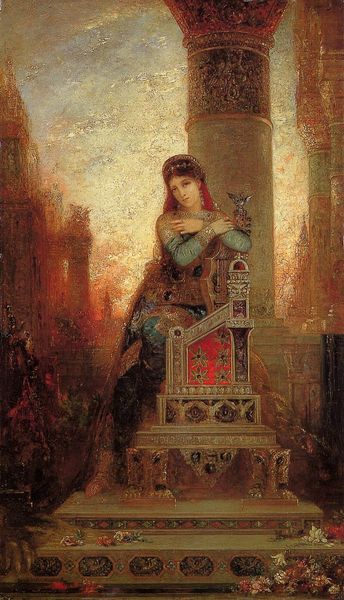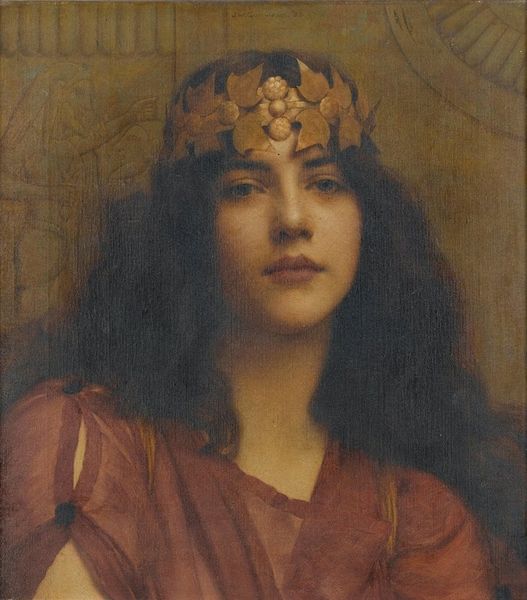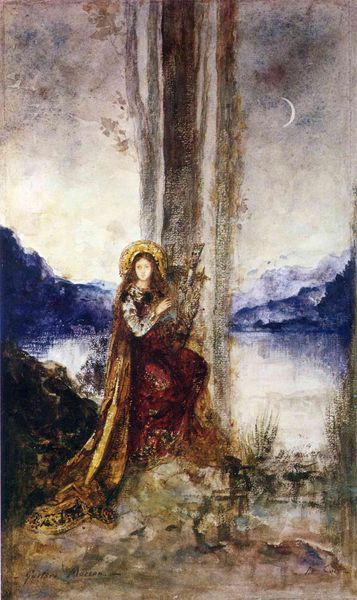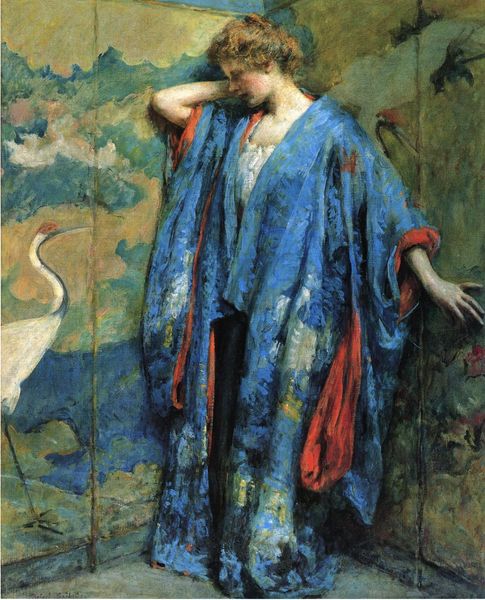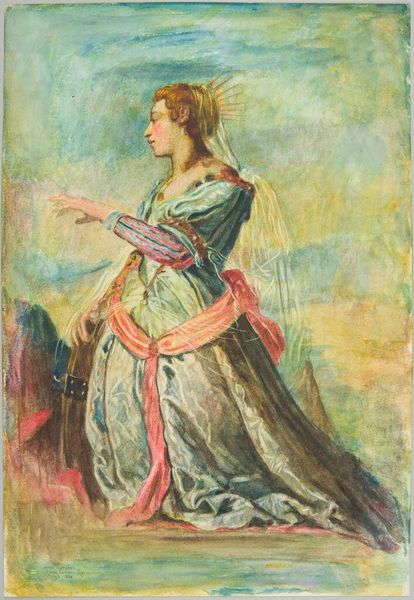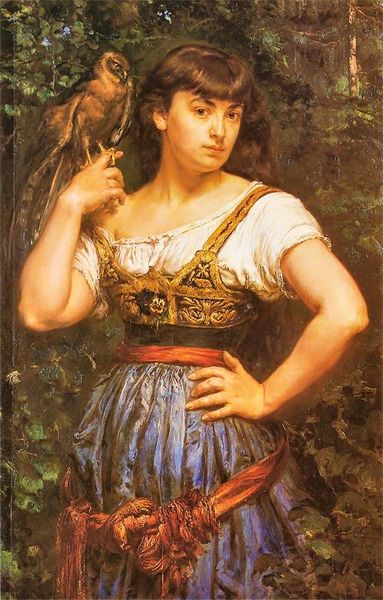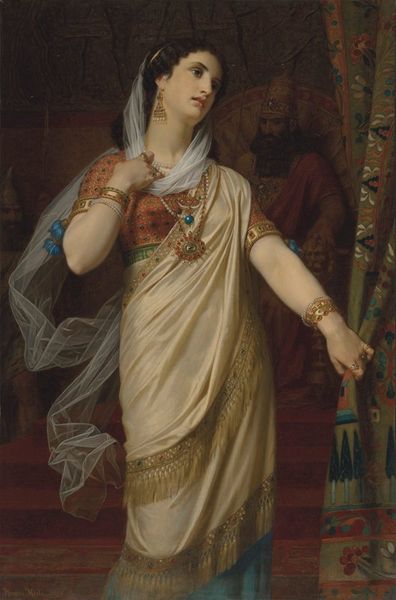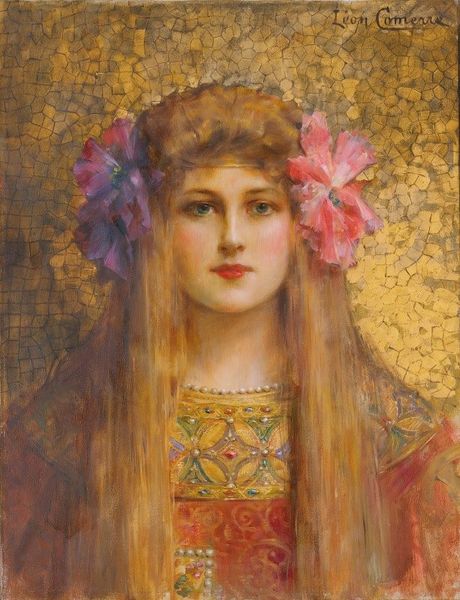
Copyright: Public domain
Gustave Moreau made this watercolor of Helen on the Walls of Troy some time in the late 19th century. The artist creates a vision of beauty and destruction, reflecting the ambivalent cultural status of this iconic woman. Moreau was working in France, at a time when the institutions of art were closely tied to the state. The French Academy, for example, promoted a conservative style and subject matter that reinforced traditional social values. However, many artists like Moreau, sought to challenge these norms by exploring new forms of expression and engaging with more complex themes. Here, Moreau turns to classical mythology, a common practice among academically trained artists, but his interpretation of Helen is far from conventional. She stands amidst the ruins of Troy, a symbol of both desire and devastation. Was Moreau making a comment on the destructive potential of beauty or perhaps critiquing the ways in which women were often idealized and objectified in art and society? Historians can examine Moreau's painting in light of broader cultural debates about beauty, gender, and power in 19th-century France, consulting a range of sources such as literary texts, critical reviews, and social histories.
Comments
No comments
Be the first to comment and join the conversation on the ultimate creative platform.
